Monthly Archives: December 2020
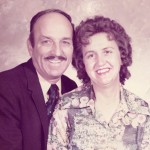
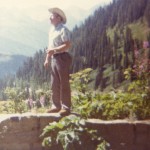 Each year, on the anniversary of my dad, Allen Spencer’s homegoing I am amazed that another year has passed. How can it possibly be 13 years since I last saw my dad? Of course, I know that my parents are in Heaven, and in my future, but that does not lessen the feeling of loneliness and sadness that I feel each day in their absence. I don’t believe anyone ever really gets used to not having their parents in this world with them. Nevertheless, my parents are in Heaven, and each day their is as the first day they went to Heaven. There is always a spirit of celebration and joy in Heaven. There is no better place to be. For that part, I am happy for them, and only sad for me, and for my sisters and our families, all of whom miss my parents very much.
Each year, on the anniversary of my dad, Allen Spencer’s homegoing I am amazed that another year has passed. How can it possibly be 13 years since I last saw my dad? Of course, I know that my parents are in Heaven, and in my future, but that does not lessen the feeling of loneliness and sadness that I feel each day in their absence. I don’t believe anyone ever really gets used to not having their parents in this world with them. Nevertheless, my parents are in Heaven, and each day their is as the first day they went to Heaven. There is always a spirit of celebration and joy in Heaven. There is no better place to be. For that part, I am happy for them, and only sad for me, and for my sisters and our families, all of whom miss my parents very much.
My dad was the spiritual patriarch of our family, always leading us in the way we should go, both in our spiritual life and in our daily physical life. Whenever we had a problem that seemed to big to handle, Dad would sit us down and say, “This is what we are going to do.” We never worried after that, because our dad had stepped up to lead us into God’s victory. He always had a level head in times of turmoil, even if it wasn’t turmoil in our family. We have witnessed so many tragedies in our lifetimes…from national tragedies to personal tragedies, but Dad, and Mom too, showed us that God will never leave us, not forsake us. They were great spiritual leaders for their family, and we are forever grateful for that guidance.
Dad loved to travel, and to show his family this wonderful country. Dad had seen many places in the world during his World War II years of active duty. He has seen places that we will likely never see, but his favorite places were always places in our great nation. Dad loved our country. He was a great patriot, who was loyal to his country unto death. He would never have been disloyal to his country. That was simply not in his nature. He fought too hard for our freedoms, as did all of his fellow soldiers. He would have stood, and did stand in his day, and said “Give me Liberty, or give me death!!” He would have done so, because to lay down and give up was not in his nature. It was through these kinds of teachings that my sisters and I learned how to keep going, to fight and stand for victory. There is not a quitter among us.
I suppose that it is Dad’s teachings we miss the most. He was never harsh. He always taught in love. I remember so many times when I had struggled in school as a grade school student, and I figured I was going to be in so much trouble because of a bad grade. Mom always deferred to Dad. I remember hearing. “Wait until your dad gets home!” Dad was the enforcer of proper education. In reality, I think Mom just thought that where education was concerned, Dad had more patience…and he did. We expected a spanking, and Dad simply said, “Well, we need to work on that.” What a relief. And Dad always did “work” on it with us. When those study 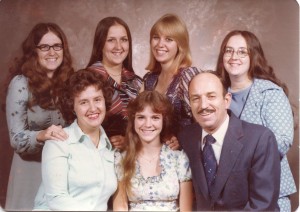
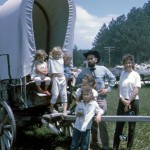 sessions were done…we got it. In the end, we were all good students, and in fact the subjects in which I struggled the most, Math and History, have become my favorites and the ones I most excel at these days, because lets face it, we are still learning. That is because of his love of learning. I will forever miss those study sessions with my dad, just as I miss him in so many other ways, and look forward to seeing him again in Heaven. I love you and Mom, Dad, and I look forward to seeing you both again.
sessions were done…we got it. In the end, we were all good students, and in fact the subjects in which I struggled the most, Math and History, have become my favorites and the ones I most excel at these days, because lets face it, we are still learning. That is because of his love of learning. I will forever miss those study sessions with my dad, just as I miss him in so many other ways, and look forward to seeing him again in Heaven. I love you and Mom, Dad, and I look forward to seeing you both again.

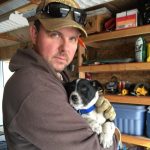 My nephew, Barry Schulenberg is a hard working mechanic for the State of Wyoming Highway Department. If a highway vehicle breaks down in our county, he is often the one sent to repair it. He also has to do maintenance work on the vehicles which means that he is on the, and that means he might have to work some overtime in the form of comp-time. That can make for a long day, and make it feel really good to get back home.
My nephew, Barry Schulenberg is a hard working mechanic for the State of Wyoming Highway Department. If a highway vehicle breaks down in our county, he is often the one sent to repair it. He also has to do maintenance work on the vehicles which means that he is on the, and that means he might have to work some overtime in the form of comp-time. That can make for a long day, and make it feel really good to get back home.
Barry and his wife, Kelli live out in the country east of Casper, Wyoming, and they really enjoy getting away from the hustle and bustle of the city. That is also why they love to go hiking, bicycling, and camping whenever they can. They are nature lovers for sure. This year, with all the Covid-19 “social distancing” no one was sure if camping was going to be an option, but in the end, the campgrounds were open. So Barry and Kelli happily hit the campgrounds. They love camping in the Big Horn Mountains, but they also went to the lake and spent some time on the water just enjoying the wind in their face and the cool water on those hot days. This year they also went to the Black Hills to go camping. There is a lot of hiking in the Black Hills, and so they had extra trails to enjoy.
Barry does a lot of work around their place in the country. He has planted a bunch of trees, and he cares for them every day. He added a cover and a hammock to their patio in the front of the house. He keeps their acreage mowed, so that the risk of a fire is much less in the hot, dry summer months. A few years back a huge fire went through, and the homes that had mowed lawns faired much better the ones that had lawns that 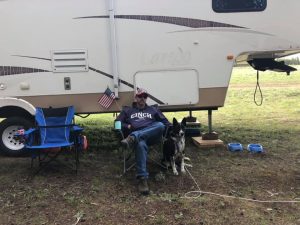
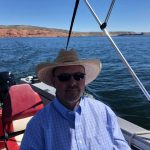 weren’t mowed. Barry has always been a worker, and he is always making improvements on their place. Many homes in the country are really just a house on a piece of land, but some people, like Barry and Kelli, have a place that has a lawn, trees, a nice house, even a large incinerator type of stove that heats the house, so little outside heat is needed. Everything is well manicured and looks sharp, and that is a credit to Barry’s pride of ownership. Today is Barry’s birthday. Happy birthday Barry!! Have a great day!! We love you!!
weren’t mowed. Barry has always been a worker, and he is always making improvements on their place. Many homes in the country are really just a house on a piece of land, but some people, like Barry and Kelli, have a place that has a lawn, trees, a nice house, even a large incinerator type of stove that heats the house, so little outside heat is needed. Everything is well manicured and looks sharp, and that is a credit to Barry’s pride of ownership. Today is Barry’s birthday. Happy birthday Barry!! Have a great day!! We love you!!
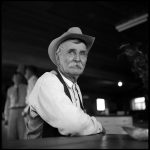 George “Bitter Creek” Newcomb was the first member of the infamous Dalton Gang…an outlaw gang in the Old West. Newcomb was born in 1866 near Fort Scott, Kansas. The Newcomb family was poor, and he began working as a cowboy at the age of twelve. Newcomb’s first job was on the “Long S Ranch” owned by CC Slaughter. By 1892, he had drifted into the Oklahoma Territory, where he first met Bill Doolin. Newcomb would meet up with Bill Doolin again, in a deadly way.
George “Bitter Creek” Newcomb was the first member of the infamous Dalton Gang…an outlaw gang in the Old West. Newcomb was born in 1866 near Fort Scott, Kansas. The Newcomb family was poor, and he began working as a cowboy at the age of twelve. Newcomb’s first job was on the “Long S Ranch” owned by CC Slaughter. By 1892, he had drifted into the Oklahoma Territory, where he first met Bill Doolin. Newcomb would meet up with Bill Doolin again, in a deadly way.
As a part of the Dalton Gang, Newcomb met up with Doolin and also met Charley Pierce, who were also members. The three men took part in the botched train robbery in Adair, Oklahoma Territory, on July 15, 1892. During the robbery, two guards and two townsmen, both doctors, were wounded. One of the doctors died the next day. Doolin, Newcomb, and Pierce complained that Bob was unfairly dividing the money fairly amongst the gang. They left in a huff, but later returned. It was at this point that Bob Dalton told Doolin, Newcomb, and Pierce that he no longer needed them. Dalton said that Newcomb was “too wild” for his gang, and Dalton left. Doolin and his friends returned to their hideout in Ingalls, Oklahoma Territory. On October 5, in Coffeyville, Kansas, the remaining members of the Dalton Gang were killed…except Emmett who survived despite being shot 27 times. 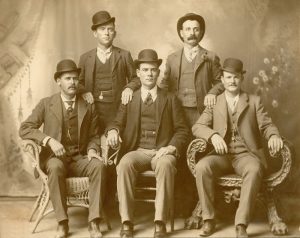 I suppose it was fortunate for Newcomb, Doolin, and Pierce that they were no longer part of the gang.
I suppose it was fortunate for Newcomb, Doolin, and Pierce that they were no longer part of the gang.
In 1893, Doolin organized his own gang from the remains of the original Dalton Gang, with Newcomb as a member, calling them the Wild Bunch. Bill Dalton later also joined the group and they became known as the Doolin-Dalton Gang. Newcomb began a romantic relationship with a 14 year old girl named Rose Dunn. She had four brothers who were outlaws and knew Newcomb. They would later become bounty hunters, calling themselves the Dunn Brothers. By 1895, Newcomb was a fugitive with a $5,000 reward on him, dead or alive. Rose Dunn traveled with him, since she could easily go into a town to purchase supplies, and no one knew that she was a part of the gang. This was the perfect plan to keep the gang hidden.
The gang often hung out in the town of Ingalls, Oklahoma. In those days, numerous outlaw gangs of the day took refuge there, and oddly, local residents often defended the outlaws and assisted in hiding them from lawmen. This was mostly due to the outlaws contributing greatly to the local economy. In one shootout with lawmen in Ingalls, called the Battle of Ingalls, three lawmen and three outlaws were shot. After several 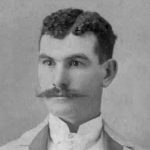 shootouts with lawmen, Newcomb fled with outlaw Charley Pierce to a hideout near Norman, Oklahoma, both of them wounded in the Ingalls shootout with US Marshals.
shootouts with lawmen, Newcomb fled with outlaw Charley Pierce to a hideout near Norman, Oklahoma, both of them wounded in the Ingalls shootout with US Marshals.
On May 2, 1895, Newcomb and Pierce rode up to the Dunn ranch, possibly to visit Rose. As soon as they dismounted, her brothers opened fire, dropping both outlaws. The next day, the Dunn brothers had loaded the two bodies into their wagon and were driving it into town to collect the reward, when Newcomb suddenly moaned and asked for water, to which one of the brothers responded with another bullet. I guess the bounty on their heads outweighed the friendship the Dunn Brothers had previously with the Wild Bunch.
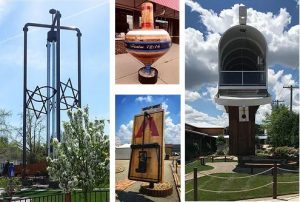 Casey, Illinois is a small town with just 2,635 people…as of 2018. Normally it would be considered a sleepy little town where nothing much happens, but Casey, Illinois is actually famous, and holds twelve world records. Yes, I said twelve!! That is a lot for a town of any size, and even more so for a town of only 2,635 people. Nevertheless, Casey has shown the world how it’s done.
Casey, Illinois is a small town with just 2,635 people…as of 2018. Normally it would be considered a sleepy little town where nothing much happens, but Casey, Illinois is actually famous, and holds twelve world records. Yes, I said twelve!! That is a lot for a town of any size, and even more so for a town of only 2,635 people. Nevertheless, Casey has shown the world how it’s done.
Their world’s record quest began with the Wind Chime in 2011. The framework for the Chime was assembled on site November 17, 2011. The huge wind chime features braces with Christian symbols. These add support, but more importantly they remind us of the importance of faith in our daily lives. The chimes were added to the frame on December 15, 2011. Many local residents attended the final touch on the structure, even though it was a cold day, it was also very exciting. With the world record the chime brought a new industry to the town…tourism. People like this sort of thing.
The next world record was the giant Golf Tee. This was suggested by the local Country Club president as a way of encouraging more interest in Casey’s public golf course. Work on the Tee in July of 2012. They team laminated lumber together to form the tee’s rough form. This took five months. Once the pieces of wood were secured, a chainsaw and sander were used to shape and smooth the surface. The Golf Tee claimed its “World’s Largest” status in May of 2013.
The Rocking Chair proved to be the most difficult World’s Record attempt. This behemoth of a project took two years to complete. The Chair claimed its world record title on October 20, 2015. In order to achieve the World’s Largest designation, the Rocking Chair needed to rock! This was quite a feat. It took ten grown men to accomplish this task! The headrest and armrests of the Chair include intricate carving and staining with a dove of peace featured on the center of the headrest and olive branches on the armrests.
In the years that followed, the wooden shoes (which can hold 15 people), the pitchfork, the mailbox (where you can actually mail a letter and go inside to do so), the key (an exact replica of the key for Jim Bolin’s work 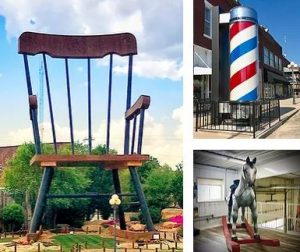 truck), the gavel, the swizzle spoon, the golf driver, barber pole, and the teeter totter followed in quick succession…all earning world record status. There are many other “big” things that don’t have world record status, but are very cool, nevertheless. The big antlers, the big bird cage, the big softball bat, the big spinning top, the big toy glider, the big wooden token, the big pizza slicer, the big knitting needles and crochet hook, the big bookworm, the big nail puzzle, the big anvil and horseshoe, the big cactus, the big ear of corn, the big mouse trap, the big rocking horse, the big yardstick, the big pencil…all grace different areas of the town. I’m sure the idea was to be a unique town, and they have certainly achieved that status. While this might have started as a way to attract tourism, it proves one thing for sure…it is possible to be a little big town.
truck), the gavel, the swizzle spoon, the golf driver, barber pole, and the teeter totter followed in quick succession…all earning world record status. There are many other “big” things that don’t have world record status, but are very cool, nevertheless. The big antlers, the big bird cage, the big softball bat, the big spinning top, the big toy glider, the big wooden token, the big pizza slicer, the big knitting needles and crochet hook, the big bookworm, the big nail puzzle, the big anvil and horseshoe, the big cactus, the big ear of corn, the big mouse trap, the big rocking horse, the big yardstick, the big pencil…all grace different areas of the town. I’m sure the idea was to be a unique town, and they have certainly achieved that status. While this might have started as a way to attract tourism, it proves one thing for sure…it is possible to be a little big town.
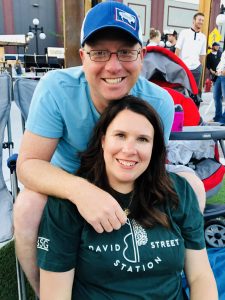 My niece, Jessi Sawdon is not your typical stay-at-home mom, if that could be a thing anyway. Most moms have been faced with the dilemma of working outside the home or staying home to raise the babies. In the past, the only work from home jobs were daycare or telemarketing. While daycare is a noble calling, and one whose workers must be given a lot of credit, because it is not easy to take care of several children all day; telemarketing is another story. Nobody wants to talk to you, and they truly wish you would just “get a real job” already!! When I was raising kids, and my daughters were raising kids, work-from-home was not a real option. I’m glad that it is for mothers these days.
My niece, Jessi Sawdon is not your typical stay-at-home mom, if that could be a thing anyway. Most moms have been faced with the dilemma of working outside the home or staying home to raise the babies. In the past, the only work from home jobs were daycare or telemarketing. While daycare is a noble calling, and one whose workers must be given a lot of credit, because it is not easy to take care of several children all day; telemarketing is another story. Nobody wants to talk to you, and they truly wish you would just “get a real job” already!! When I was raising kids, and my daughters were raising kids, work-from-home was not a real option. I’m glad that it is for mothers these days.
Jessi has a degree in communication and marketing, and works as the Marketing Coordinator at LUM Studio. She is also mommy to her daughter, Adelaide Ione. The biggest blessing from her work-from-home job is that she can take Adelaide to and from school and attend the school functions that so many working moms miss because of their jobs. LUM Studio is a website designer and hosting company. Their work is beautiful and the are 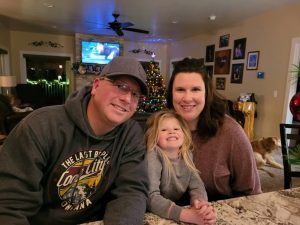 enjoying great success. They are becoming well known and have received work from businesses around the state. It is great that Jessi can be a stay-at-home mom to Adelaide and still focus on her career. Being able to have both a career and a stay-at-home mom atmosphere is really so important.
enjoying great success. They are becoming well known and have received work from businesses around the state. It is great that Jessi can be a stay-at-home mom to Adelaide and still focus on her career. Being able to have both a career and a stay-at-home mom atmosphere is really so important.
Jessi is a bit of a comedian. She loves doing things to make people laugh. It is something that seems to run in the family. You might ask her sister, Lindsay about Jessi, and she will respond with, “Who is Jessi?” Her sister Kellie loves to be goofy, and always laughs or smiles…especially when someone like Jessi decides to photobomb her. Her brother, Ryan is one of the world’s biggest  teasers, and all the girls have been subject to his teasing ways, but it is done in good fun, and it makes for a lot of laughs for this family.
teasers, and all the girls have been subject to his teasing ways, but it is done in good fun, and it makes for a lot of laughs for this family.
Of course, like most of us, Covd-19 has required Jessie, her husband, Jason and Adelaide to be in social distancing mode, but it didn’t keep them from being able to go camping quite a bit. During the summer and fall and they really enjoyed their new toy hauler, because they can go camping and four wheeling. That has really let them enjoy the great outdoors. Jessi and Jason have a side by side four wheeler that seats four, so they can all go together on their sight seeing rides. Adelaide loves riding with her mom and dad! They love going to the lake, the Big Horns, and sometimes Jason finds little out of the way places where they can just enjoy being together. They also love to take walks as a family and they go often when the weather permits. God has really blessed them! Today is Jessi’s birthday. Happy birthday Jessi!! Have a great day!! We love you!!
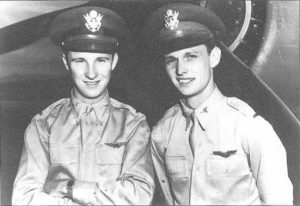 Most of us have learned of the event that brought the United States into World War II…the attack on Pearl Harbor. The United States was caught totally unaware, even though the signs were there, and even some chatter was heard. Nevertheless, our ships were sitting in the harbor, with many of the men not on board, and our planes were sitting on the tarmac. The plan the Japanese had was to wipe out the US military machine, so that the United States was virtually out of the war. The mistake the made was that they misjudged the United States. Nevertheless, on December 7, 1941, the attack on Pearl Harbor was a battle the United States lost.
Most of us have learned of the event that brought the United States into World War II…the attack on Pearl Harbor. The United States was caught totally unaware, even though the signs were there, and even some chatter was heard. Nevertheless, our ships were sitting in the harbor, with many of the men not on board, and our planes were sitting on the tarmac. The plan the Japanese had was to wipe out the US military machine, so that the United States was virtually out of the war. The mistake the made was that they misjudged the United States. Nevertheless, on December 7, 1941, the attack on Pearl Harbor was a battle the United States lost.
There were heroes on that day, however. The people who worked to save what lives they could, and put out the fires caused by the attack. And there were two heroes I had never heard about. I’m not sure why I hadn’t, but the fact remains that I hadn’t. Kenneth Taylor and George Welch were pilots stationed at Pearl Harbor on that fateful day. Taylor was a second lieutenant in the US Army Air Corps’ 47th Pursuit Squadron. He received his first posting to Wheeler Army Airfield in Honolulu, Hawaii in April 1941. His commanding officer, General Gordon Austin, chose Taylor and another pilot, George Welch, as his flight commanders shortly after they arrived in Hawaii. A week before the Japanese attack on Pearl Harbor, the 47th Pursuit Squadron was temporarily moved to the auxiliary airstrip at Haleiwa Field, located some 11 miles from Wheeler, for gunnery practice…a move that made their response to the attack possible.
Saturday, December 6, 1941, found Taylor and Welch spending the evening at a dance held at the officers’ club at Wheeler Field. After the dance, the two pilots joined an all-night poker game. After that, the account of the story gets a little fuzzy. Some said that the two pilots had finally gone to sleep, and were awoken only around 7:51am, when Japanese fighter planes and dive bombers attacked Wheeler, but others said that the poker game was just wrapping up, and they were contemplating a morning swim when the attack began. Whatever the case may be, Taylor and Welch were stunned to hear low-flying planes, explosions, and machine-gun fire above them. Information was scarce in all the chaos, but they learned that two-thirds of the planes at the main bases of Hickham and Wheeler Fields had been destroyed or damaged so badly that they were unable to fly. The two men rush to Haleiwa Field to get their planes. They had no orders, but Taylor called Haleiwa and 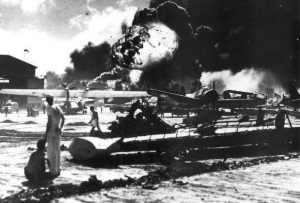 commanded the ground crew to prepare their Curtiss P-40 Tomahawks for takeoff, while Welch ran to get Taylor’s new Buick. The men were still wearing their tuxedo pants from the night before, but that didn’t stop them. The two pilots drove the 11 miles to Haleiwa, reaching speeds of 100 miles per hour along the way.
commanded the ground crew to prepare their Curtiss P-40 Tomahawks for takeoff, while Welch ran to get Taylor’s new Buick. The men were still wearing their tuxedo pants from the night before, but that didn’t stop them. The two pilots drove the 11 miles to Haleiwa, reaching speeds of 100 miles per hour along the way.
When they reached the field, Welch and Taylor jumped into their P-40s, which by that time had been fueled but not fully armed. That didn’t stop them. They took off and immediately attracted Japanese fire. Welch and Taylor were facing off virtually alone against some 200 to 300 enemy aircraft. When they ran out of ammunition, they returned to Wheeler to reload. The senior officers ordered the pilots to stay on the ground, but then
the second wave of Japanese raiders flew in, scattering the crowd. Taylor and Welch took off again, in the midst of a swarm of enemy planes. Though Welch’s machine guns were disconnected, he fired his .30-caliber guns, destroying two Japanese planes on the first attack run. On the second, with his plane heavily damaged by gunfire, he shot down two more enemy aircraft. A bullet pierced the canopy of Taylor’s plane, hitting his arm and sending shrapnel into his leg, but he managed to shoot down at least two Japanese planes, and perhaps more. In the end, Taylor was officially credited with two kills, and Welch with four.
Welch and Taylor were among only five Air Force pilots who managed to get their planes off the ground and engage the Japanese that morning. The total loss in aircraft at Pearl Harbor were estimated at 188 planes destroyed and 159 damaged. The Japanese lost just 29 planes. Both men were awarded the Distinguished Service Cross medals, becoming the first to be awarded that distinction in World War II. Welch was nominated for the Medal of Honor, the military’s highest award, but was reportedly denied because his superiors maintained he had taken off without proper authorization. For his injuries, Taylor received the Purple Heart.
After Pearl Harbor, George Welch flew nearly 350 missions in the Pacific Theater during World War II, shooting down 12 more planes and winning many other decorations. After he contracted malaria in 1943, his wartime career came to an end. While in the hospital in Sydney, Australia, he met his wife. After the war, Welch became a test pilot for North American Aviation. There are some claims that he became the first pilot to break the Mach-1 barrier with an unauthorized flight over the California desert in 1947, several weeks before Chuck Yeager’s famous flight. Unfortunately, Welch was killed in 1954 while ejecting from his disintegrating F-100 Super Sabre fighter jet during a test flight.
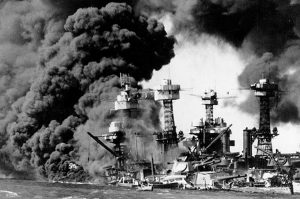
After Pearl Harbor, Ken Taylor was transferred to the South Pacific, where he flew out of Guadalcanal and was credited with downing another Japanese aircraft. Unfortunately, his combat career was cut short after someone fell on top of him in a trench during an air raid on the base, breaking his leg. He became a commander in the Alaska Air National Guard and retired as a brigadier general after 27 years of active duty. Taylor was awarded the Distinguished Service Cross, the Legion of Merit, the Air Medal, and a number of other decorations. In his post military career, he worked as an insurance underwriter. Taylor died in Tucson, Arizona in 2006, at the age of 86.
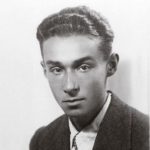 Primo Levi was an Italian Jew born on July 31, 1919 at Corso Re Umberto 75 in Turin, Italy, to Jewish parents Cesare and Esther “Rina” Levi. His father worked for the manufacturing firm Ganz and spent much of his time working abroad in Hungary, where Ganz was based. Levi’s mother was well educated, having attended the Istituto Maria Letizia. Rina and Cesare’s marriage was arranged by Rina’s father, Cesare Luzzati, who gave the young couple the apartment at Corso Re Umberto as a wedding gift. Primo Levi lived there for almost his entire life.
Primo Levi was an Italian Jew born on July 31, 1919 at Corso Re Umberto 75 in Turin, Italy, to Jewish parents Cesare and Esther “Rina” Levi. His father worked for the manufacturing firm Ganz and spent much of his time working abroad in Hungary, where Ganz was based. Levi’s mother was well educated, having attended the Istituto Maria Letizia. Rina and Cesare’s marriage was arranged by Rina’s father, Cesare Luzzati, who gave the young couple the apartment at Corso Re Umberto as a wedding gift. Primo Levi lived there for almost his entire life.
Primo Levi was an intelligent young man who excelled in school. In September 1930 he entered the Massimo d’Azeglio Royal Gymnasium a year ahead of normal entrance requirements. In class he was the youngest, the shortest and the most clever…he was also the only Jew. All this brought as its reward constant bullying. In August 1932, following two years at the Talmud Torah school in Turin, he sang in the local synagogue for his Bar Mitzvah. In 1933, he joined the Avanguardisti movement for young Fascists, as was expected of all young Italian schoolboys. He never wanted to be a soldier, so he avoided rifle drill by joining the ski division, and spent every Saturday during the season on the slopes above Turin. As a young boy Levi was plagued by illness, particularly chest infections, but he was keen to participate in physical activity. In his teens, Levi and a few friends would sneak into a disused sports stadium and conduct athletic competitions.
Levi later became a scientist, and it was this decision that would save his life during the Holocaust years…so to speak. When the deportations began, Levi found himself on a train to Auschwitz…the notorious death camp. The prisoners were put through a rigorous selection process. Those who didn’t make the cut, went directly to 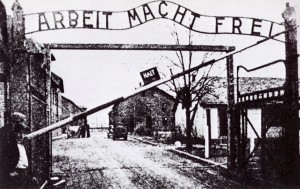 the gas chambers. The rest were placed into forced labor…a harsh back-breaking labor with starvation level rations.
the gas chambers. The rest were placed into forced labor…a harsh back-breaking labor with starvation level rations.
Surviving the initial selection process at Auschwitz merely qualified a prisoner to be assigned to extremely harsh conditions involving back-breaking labor and intentionally miniscule amounts of nourishment. Levi was different. He was considered “useful” to the Nazis. His expertise as a scientist got him assigned in the camp laboratory. It also got him better food rations. Many would consider him lucky, but there was a price to pay for such luck. Levi was spared the horrific treatment his fellow prisoners were subjected to, but his protection from actually being subjected to such treatment did not save him from the horrors of witnessing such treatment. Levi tells the story of how prisoners at Auschwitz were treated in the books he has written on the subject. He tells of periodic selections, in which prisoners were forced to strip naked. These inspections were to “weed out” prisoners who were too exhausted or sick to provide meaningful labor. These prisoners were designated for transport to Auschwitz-Birkenau and the gas chamber. The prisoners who had been at Auschwitz…unlike newer prisoners, knew exactly what awaited them.
Levi’s description of this process from his work “The Drowned and the Saved” explains how most were already too mentally defeated and humiliated to resist: “The day in the [camp] was studded with innumerable harsh strippings – checking for lice, searching one’s clothes, examining for scabies and then the morning wash-up – as well as for the periodic selections, during which a ‘commission’ decided who was still fit for work and who, on the contrary, was marked for elimination. Now a naked and barefoot man feels that all his nerves and tendons are severed: He is helpless prey. Clothes, even the foul clothes distributed, even the crude clogs with their 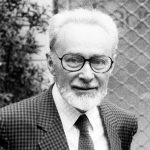 wooden soles, are a tenuous but indispensable defense. Anyone who does not have them no longer perceives himself as a human being but rather as a worm: naked, slow, ignoble, prone on the ground. He knows that he can be crushed at any moment.”
wooden soles, are a tenuous but indispensable defense. Anyone who does not have them no longer perceives himself as a human being but rather as a worm: naked, slow, ignoble, prone on the ground. He knows that he can be crushed at any moment.”
Levi survived his ordeal in Auschwitz, one of the few that did, but that did not ensure a quiet peaceful life for him. On April 11, 1987, Primo Levi died after a fall from a three-story building. His death was ruled a suicide, which would not be surprising with “survivor’s guilt” syndrome, but there are many who don’t believe that Levi would have committed suicide, and they think his death was an accident. I don’t suppose we will ever know, but I believe that whatever happened, Primo Levi is finally at peace.
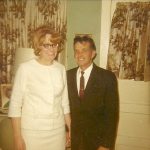 For years, my husband, Bob and I went to visit his Aunt Linda and Uncle Bobby Cole in Kennebec, South Dakota once a year. It was something we all looked forward to. Kennebec is a really small town, with very little to do, so we had the chance to slow down our busy lives, play cards, drink coffee, and visit. For us it was a nice change, for Linda and Bobby, I suppose it was life as usual. Another nice thing was that no babysitters were needed. Our girls Corrie Petersen and Amy Royce were little at that time, and would need to be watched if we went out as couples. The played with Linda and Bobby’s kids, Sheila Gregory and Pat Cole. Everyone had a great time.
For years, my husband, Bob and I went to visit his Aunt Linda and Uncle Bobby Cole in Kennebec, South Dakota once a year. It was something we all looked forward to. Kennebec is a really small town, with very little to do, so we had the chance to slow down our busy lives, play cards, drink coffee, and visit. For us it was a nice change, for Linda and Bobby, I suppose it was life as usual. Another nice thing was that no babysitters were needed. Our girls Corrie Petersen and Amy Royce were little at that time, and would need to be watched if we went out as couples. The played with Linda and Bobby’s kids, Sheila Gregory and Pat Cole. Everyone had a great time.
Linda and Bobby owned a small hotel in Kennebec, so a place to stay was no problem. Unfortunately, the hotel was hit by lightning, and the resulting fire was bad enough to make the hotel uninhabitable, so the trips to Kennebec just stopped. While they knew the strike was close, 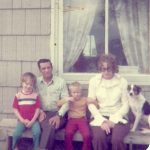 Linda and Bobby didn’t know it had hit the hotel, until they smelled the burning wood from the upstairs rooms. The hotel was deemed a total loss. Very few rooms were unaffected…by smoke damage, if not fire damage. The last time I saw the hotel, it was a charred shell of what it had once been. It was a sad time for everyone, because it was the beginning of change…a change that would end the yearly trips to Kennebec. After weighing the options, Linda and Bobby decided to move to Winnemucca, Nevada. While my in-laws tried to see Linda and Bobby during their snowbird days, with the onset of Alzheimer’s Disease in my mother-in-law, and the advancement of COPD in my father-in-law, their snowbird days came to an abrupt end too.
Linda and Bobby didn’t know it had hit the hotel, until they smelled the burning wood from the upstairs rooms. The hotel was deemed a total loss. Very few rooms were unaffected…by smoke damage, if not fire damage. The last time I saw the hotel, it was a charred shell of what it had once been. It was a sad time for everyone, because it was the beginning of change…a change that would end the yearly trips to Kennebec. After weighing the options, Linda and Bobby decided to move to Winnemucca, Nevada. While my in-laws tried to see Linda and Bobby during their snowbird days, with the onset of Alzheimer’s Disease in my mother-in-law, and the advancement of COPD in my father-in-law, their snowbird days came to an abrupt end too.
The kids were all grown and married, so the trips we made were just Bob and me…and those trips were few 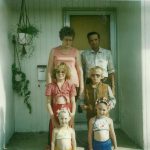 and far between. Nevada was just not a place we got to very often, and they didn’t travel much anymore either. After her sister, my mother-in-law’s Alzheimer’s diagnosis, Linda couldn’t bear to see her sister not remembering her anymore, so they couldn’t make themselves visit. That was probably the saddest part of all this change. Even before my mother-in-law passed away in January of 2018, Linda passed away in September of 2016. The husbands, Walt Schulenberg, my father-in-law, passed away in May of 2013 and Bobby passed away in May of 2014. In just a short time, they were all gone, and even more had changed than before. Now, all we have are the memories that surface from time to time, especially on birthdays. Today would have been Linda’s 74th birthday. Happy birthday in Heaven, Linda. We love and miss you very much.
and far between. Nevada was just not a place we got to very often, and they didn’t travel much anymore either. After her sister, my mother-in-law’s Alzheimer’s diagnosis, Linda couldn’t bear to see her sister not remembering her anymore, so they couldn’t make themselves visit. That was probably the saddest part of all this change. Even before my mother-in-law passed away in January of 2018, Linda passed away in September of 2016. The husbands, Walt Schulenberg, my father-in-law, passed away in May of 2013 and Bobby passed away in May of 2014. In just a short time, they were all gone, and even more had changed than before. Now, all we have are the memories that surface from time to time, especially on birthdays. Today would have been Linda’s 74th birthday. Happy birthday in Heaven, Linda. We love and miss you very much.
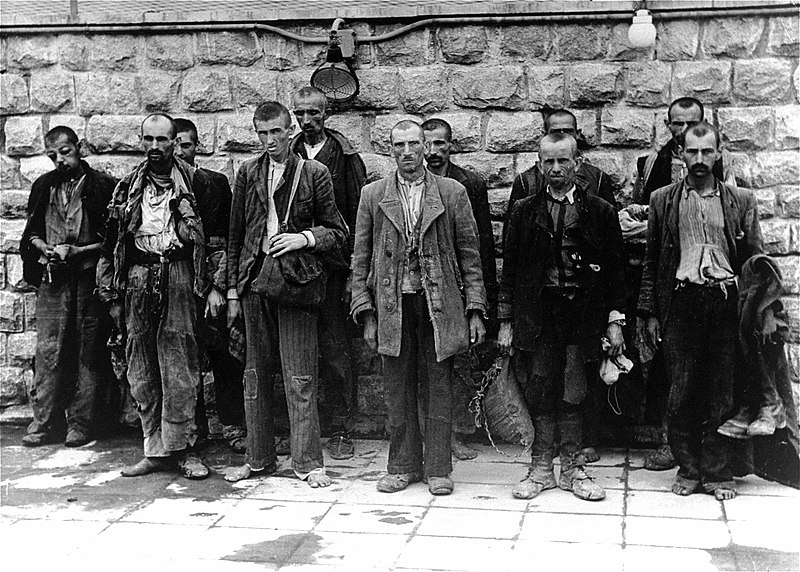 The atrocities the Nazis put the Jewish people and other minorities through in the camps, is well known to be horrible, but many people don’t know the half of it. Hitler had a number of camps in which to imprison these people that he had decided were “undesirable” for one reason or another. Some were even German people, who disagreed with Hitler’s ideas. They became the political prisoners. They were treated no better than their minority counterparts. Disagreeing with Hitler was a fatal choice for the most part.
The atrocities the Nazis put the Jewish people and other minorities through in the camps, is well known to be horrible, but many people don’t know the half of it. Hitler had a number of camps in which to imprison these people that he had decided were “undesirable” for one reason or another. Some were even German people, who disagreed with Hitler’s ideas. They became the political prisoners. They were treated no better than their minority counterparts. Disagreeing with Hitler was a fatal choice for the most part.
Mauthausen was the main political concentration camp in Austria. Mauthausen was not an extermination camp like Auschwitz-Birkenau. Nevertheless, it is estimated that about 100,000 people died at Mauthausen between its inception in 1939 and May 5, 1945, when it became the last camp liberated by the Allies. Sadly, like most of the camps, the liberation came just hours or days too late for some of the prisoners. These unfortunate ones died just prior to the liberation. Their strength gave out, just when rescue was so close.
Mauthausen was a little bit different than the other camps. Probably the greatest difference was the fact that the camp was in close proximity to a rock quarry. Near the quarry was a set of rock stairs known as the Stairs of Death. Most of us couldn’t imagine how a set of stairs could be considered such an instrument of death, that  they would become infamous, but that is exactly what these stairs did, and it is shocking. One of the survivors of Mauthausen gave this account saying, “Inmates were given light clothing and wooden (clogs) and put to work in the stone quarry. This involved carrying heavy stones up 180 steps, known as the “staircase of death” because of the beatings, shootings and fatal accidents to which the crowded mass of inmates was exposed to there. The food was totally inadequate for the heavy labor performed, and a stay in Mauthausen was indeed synonymous with “extermination by work.”
they would become infamous, but that is exactly what these stairs did, and it is shocking. One of the survivors of Mauthausen gave this account saying, “Inmates were given light clothing and wooden (clogs) and put to work in the stone quarry. This involved carrying heavy stones up 180 steps, known as the “staircase of death” because of the beatings, shootings and fatal accidents to which the crowded mass of inmates was exposed to there. The food was totally inadequate for the heavy labor performed, and a stay in Mauthausen was indeed synonymous with “extermination by work.”
Apparently, climbing the stone steps carrying heave stones was not the normal work performed at Mauthausen, but rather a deliberate punishment and death. The unfortunate prisoner or group of prisoners who made the guards angry, found out just how horrific this particular punishment was. One of the most famous incidents involved 47 Allied aviators transported to the camp. These men were essentially murdered in September 1944. Maurice Lampe, a French political prisoner, testified at Nuremberg saying, “For all the prisoners at Mauthausen, the murder of these men has remained in their minds like a scene from Dante’s Inferno. This is how it was done: at the bottom of the steps they loaded stones on the backs of these poor men and they had to carry 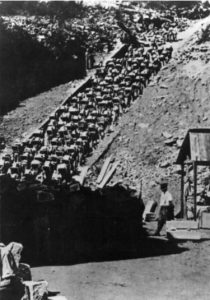 them to the top. The first journey was made with stones weighing 25 to 30 kilos (55 to 65 pounds) and was accompanied by blows. Then they were made to run down. For the second journey, the stones were even heavier; and whenever the poor wretches sank under their burden, they were kicked and hit with a bludgeon. Even stones were hurled at them… In the evening when I returned from the gang with which I was then working, the road which led to the camp was a bath of blood… I almost stepped on the lower jaw of a man. Twenty-one bodies were strewn along the road. Twenty-one had died on the first day. The twenty-six others died the following morning…”
them to the top. The first journey was made with stones weighing 25 to 30 kilos (55 to 65 pounds) and was accompanied by blows. Then they were made to run down. For the second journey, the stones were even heavier; and whenever the poor wretches sank under their burden, they were kicked and hit with a bludgeon. Even stones were hurled at them… In the evening when I returned from the gang with which I was then working, the road which led to the camp was a bath of blood… I almost stepped on the lower jaw of a man. Twenty-one bodies were strewn along the road. Twenty-one had died on the first day. The twenty-six others died the following morning…”
The sight of it was enough to make the description difficult for a man who had seen his share of horrific scenes in his lifetime. Anyone who had been in the camps, or through the camp, or involved in liberating the camps knew first hand the viciousness of the Nazi regime. Once they witnessed these atrocities, they could never forget what they saw. It was a scene that shaped them for the rest of their lives.
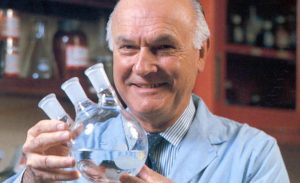 An inventor might set out to solve a problem or make a job easier, but halfway through the process…somehow, the invention turns into something completely different. And some inventions maybe started out simply experimenting with different chemicals and suddenly, you have something amazing.
An inventor might set out to solve a problem or make a job easier, but halfway through the process…somehow, the invention turns into something completely different. And some inventions maybe started out simply experimenting with different chemicals and suddenly, you have something amazing.
Eastman Kodak researcher, Harry Coover was trying to create plastic gunsights. Coover first came across cyanoacrylates (the chemical name for these überadhesives) in World War II. The problem was that the cyanoacrylates kept sticking to everything. The substance they came up with was very sticky. In fact, it was so sticky that it just wouldn’t work. 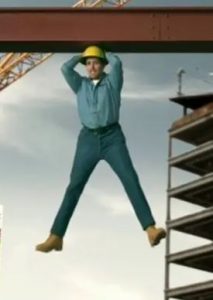 Its stickiness infuriated Coover. The substance was “shelved” for years, because while it was an interesting substance, they couldn’t figure out what to use it for.
Its stickiness infuriated Coover. The substance was “shelved” for years, because while it was an interesting substance, they couldn’t figure out what to use it for.
Coover dismissed the chemical and tried different approaches. He came across the material again in 1951. This time, Kodak experimented with cyanoacrylates for heat-resistant jet airplane canopies. Again, the stickiness got in the way. It wouldn’t work for the project at hand, but then Coover had an epiphany. “Coover realized these sticky adhesives had unique properties in that they required no heat or pressure to bond,” writes the Massachusetts Institute of Technology (MIT) in a column from 2004. “He and his team tried the substance on various items in the lab and each time, the items became permanently bonded together. Coover – and his employer – knew they were on to something.” This stuff was an amazing adhesive.
While Coover’s original patent called the new invention “Superglue,” Kodak sold the adhesive under the less-evocative name “Eastman 910.” Have you ever heard of Eastman 910? No…I haven’t either. Sometimes the 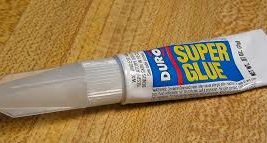 success of an invention is partly or even largely in the name. Eastman 910 was a very good adhesive, but with a lackluster name. “Later it became known as Super Glue, and Coover became somewhat of a celebrity, appearing on television in the show ‘I’ve Got a Secret,’ where he lifted the host, Garry Moore, off the ground using a single drop of the substance,” writes MIT. I doubt there are many people these days who haven’t heard of Superglue. We have all used it, because it is one of the best glues out there. As the years go by, I’m sure inventors will come up with better glues, but I don’t know if any of them will be as easy to use as Superglue is.
success of an invention is partly or even largely in the name. Eastman 910 was a very good adhesive, but with a lackluster name. “Later it became known as Super Glue, and Coover became somewhat of a celebrity, appearing on television in the show ‘I’ve Got a Secret,’ where he lifted the host, Garry Moore, off the ground using a single drop of the substance,” writes MIT. I doubt there are many people these days who haven’t heard of Superglue. We have all used it, because it is one of the best glues out there. As the years go by, I’m sure inventors will come up with better glues, but I don’t know if any of them will be as easy to use as Superglue is.

